The Good, the Bad and the Ugly of Pinterest

This post was previously published under the title, 'A Review of Online Resources - Pinterest'.
Teachers LOVE Pinterest. We try and have a Pinterest perfect classroom, with cute displays on our doors. (Here’s mine from a few years ago)
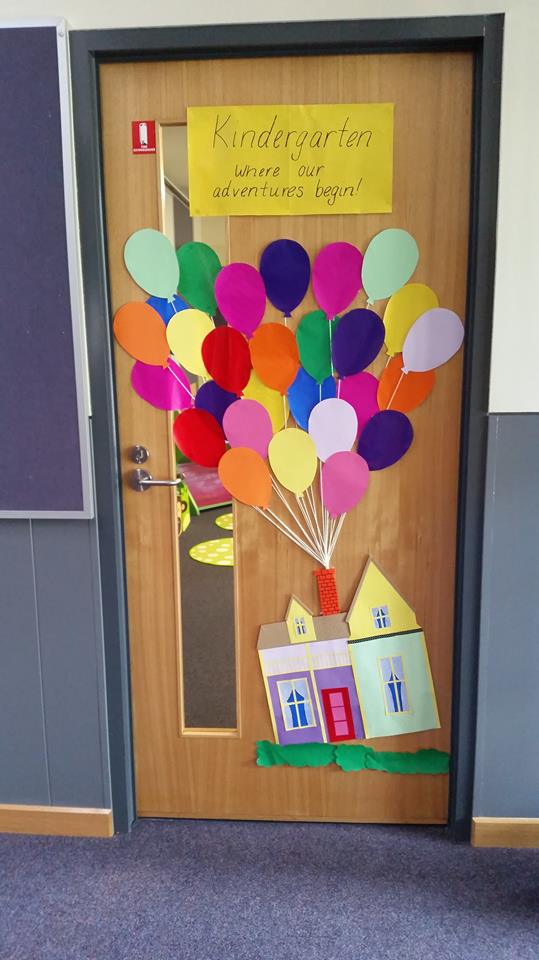
I’ve made rain clouds out of balloons, paper Mache and cotton balls. I’ve created a box of paper fruit and veg for my dramatic play area. I’ve even made whole immersion experiences for my kiddos using MANY ideas I’ve gained from that magical website that seems to have all the answers! Pinterest can be amazing for helping lighten the creative load of teaching. However, when you are searching for more than preschool fine motor activities or crafty fun, things can get a little tricky.
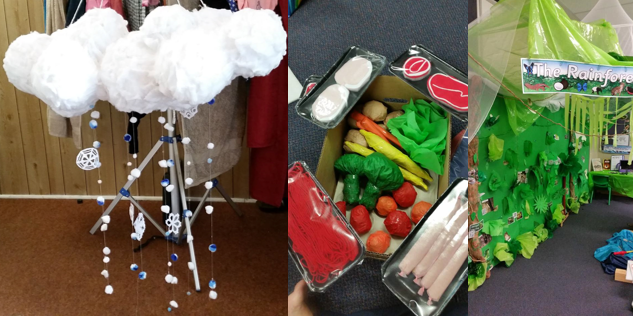
In light of this, I’ve put together a review of some of the good, problematic and downright ugly pins I’ve seen about the teaching of reading. After all, not everything we find online constitutes effective practice.
Before we delve into this blow by blow description of my findings, I’d like to outline five components of evidence based teaching practice that we should be keeping in mind as we explore Pinterest in hope of finding free, downloadable resources that will meet our students’ needs and save us loads of time.
Evidence based reading instruction includes:
1.Teaching phoneme grapheme (sound/letter) correspondences explicitly and systematically. That is, there is a purposeful sequence of teaching where the adult outlines exactly what is to be taught and children can demonstrate that knowledge or skill. This does not involve children discovering or problem solving these connections.
2. Children are taught to blend sounds in words together to read and pull them apart to spell. There are no stand alone spelling programs. Children are taught decoding and encoding (spelling) at the same time.
3. Children are taught to deal with single sounds, not chunks of sounds. So, no blends (str, pl, nt) or word familes (at, op, an) are taught. The only method of decoding that a beginning reader needs to be taught is to blend sound by sound. As children progress, they will be taught about base words, prefixes and suffixes as well as word origins and spelling patterns. All of this will support their reading, but to start off with, it’s sounding out that we need to teach.
4.Instructional reading materials only contain sounds and high frequency words that the child knows. Decodable readers are used to avoid children guessing. Naturally, we want children to have access to a range of wonderful, more complex books, but we are not expecting them to read these on their own straight away.
5.There is no sight word program. High frequency words are taught in such a way that children learn to understand words, not memorise them. The evidence is clear that we do not process words as whole units, but rather sound by sound. Once children are taught the alphabetic code well, there are few words that fit into the category of ‘irregular, high frequency’. 97% of words can be decoded once you have the knowledge.
The inclusions above relate strongly to the teaching of phonics. Of course, there are other components of reading instruction that include fluency, vocabulary development, comprehension and phonological and phonemic awareness. However, there seems to be such confusion about what effective phonics teaching actually is, that I felt it necessary to focus on it today. So, here we go!
In preparing to write this post I used a few different search terms including “Teaching Reading”, “Phonics”, “Reading Instruction” and “Learning to Read”. Regardless of what I searched for, there were a few common and consistent types of pins that came through. Let’s start with the worst pin of them all.
Wrong, Wrong, Wrong
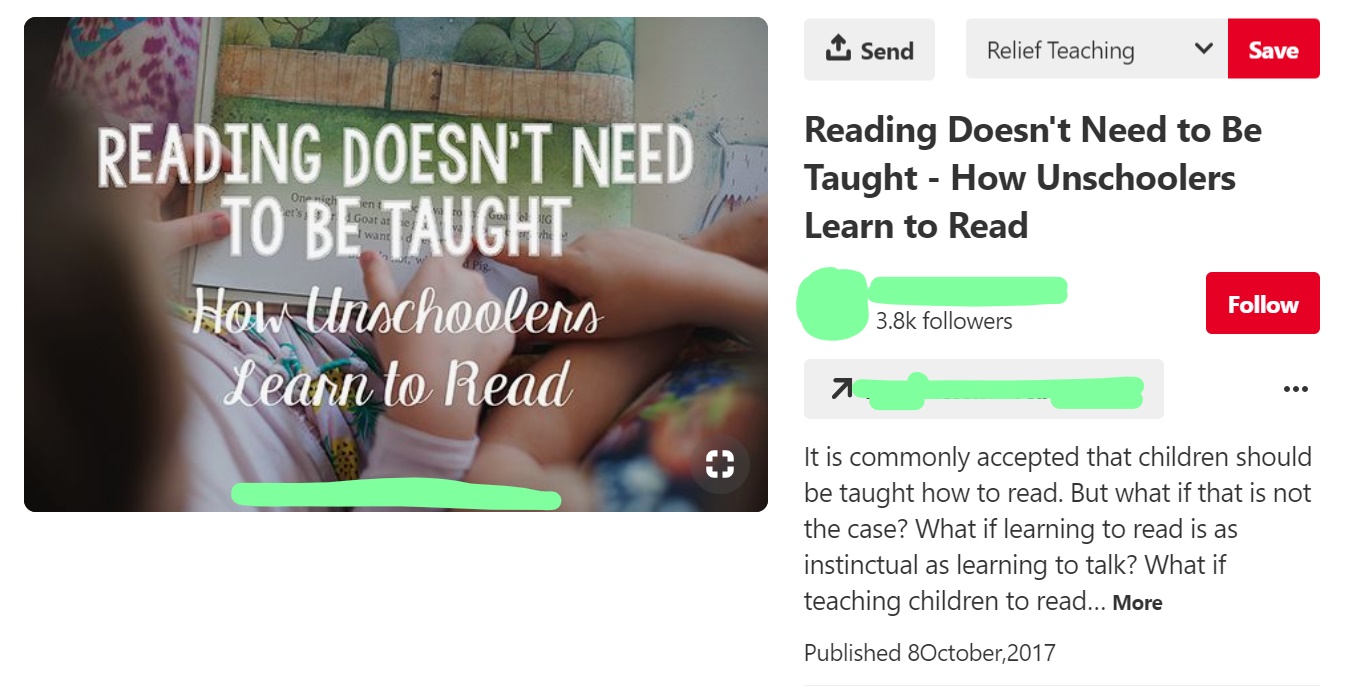
This message is just plain irresponsible. A small percentage of children will seem to just ‘pick up’ reading, but the vast majority require systematic, explicit instruction to develop a high level of reading proficiency. The fact is that learning to read is NOT as ‘instinctual as learning to talk’. Pins like this spread damaging and false messages about reading instruction. If you see one like it, look away! Look AWAY!
So Many Pins About Word Families and Blends!
As stated above, we should only be teaching children to decode one sound at a time. Blends (consonant clusters st, pl, nt) should not be taught as whole units. Teaching children to read lists of word families in the hope that learning the unit ‘at’ will make it easier for children to develop fluency (cat, hat, rat, mat) also falls into this category. There are about 30 consonant clusters (blends) in English and up to 80 different common word families. If you have an in-depth look at word families there can be literally 1000s of them to learn. Systematic Synthetic Phonics teaches the 44 sounds of English and how they are represented (in approximately 150 different ways). Teaching word families and blends means that children will need to learn an additional 110+ separate pieces of information in order to read effectively. Why almost double what children need to learn? For children with potential reading difficulties, this makes learning to read even harder. It is much better to teach children to read all through a word, processing sound by sound. I have attached some useful resources around this at the end of this post.
The pin below provides a great little activity to practice reading simple words.
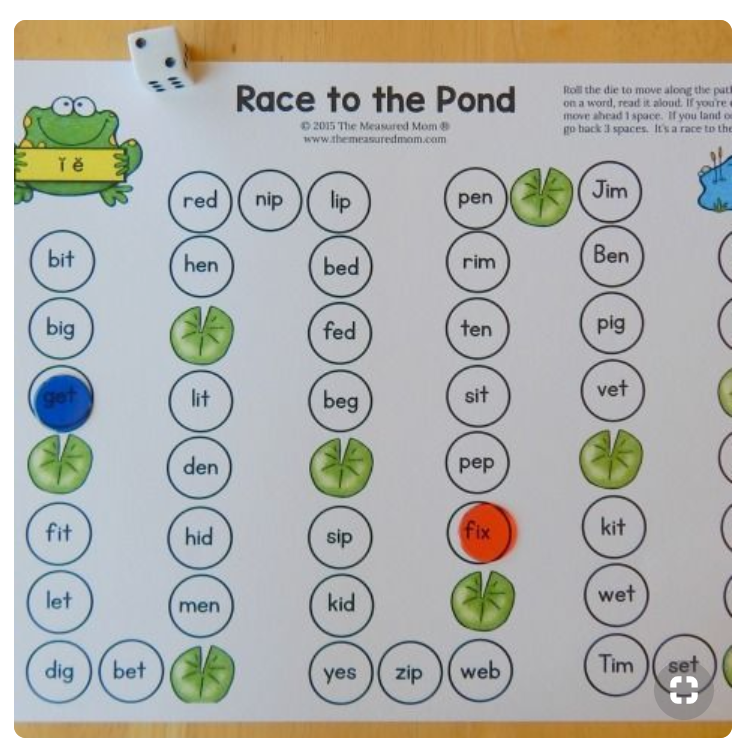
And for students ready to move on to the more complex code, this one would be useful.
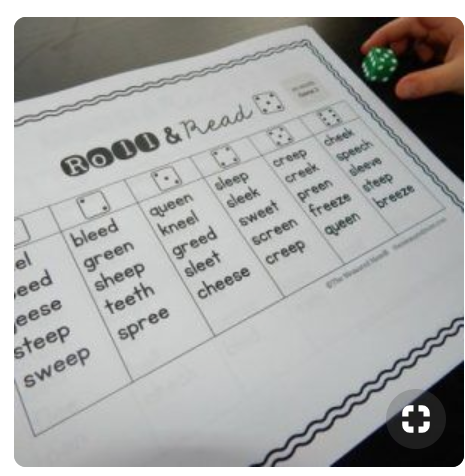
Resources that masquerade as ‘phonics’.
It seems that there is a bit of confusion about what 'phonics' teaching actually is. This most certainly, is not it. At no point is cutting up sentences and putting them back together phonics instruction. Nor is it a worthwhile activity for beginning readers to be doing. This kind of thing is whole language instruction at its worst and has no place in an evidence-based program. (I feel rather strongly about this one…)
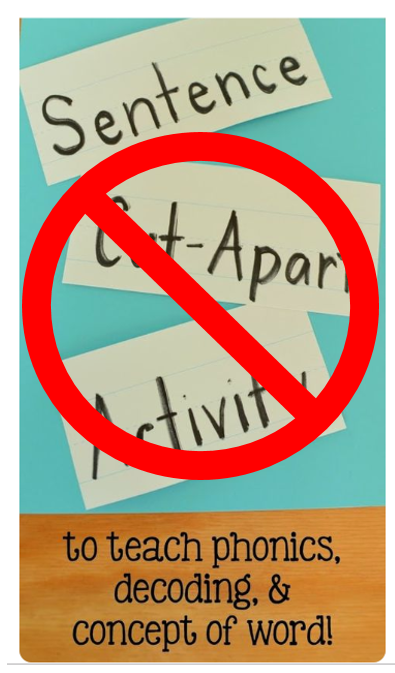
The pin below shows a ‘phonics mat’. I call it an exercise in guessing. You may, very loosely, describe it as comprehension work, but the child would need to the get to the third sentence before they have a clue what that first word would be. They would need quite a high degree of reading proficiency to the complete it, by which time it would be a redundant task. I also question the wisdom of ‘busy work’ in rotations. Unless an adult was sitting with the child, I highly doubt that the activity would be done with any accuracy. Also, this is a word family activity which means that it’s on the list of ineffective strategies for reading instruction.
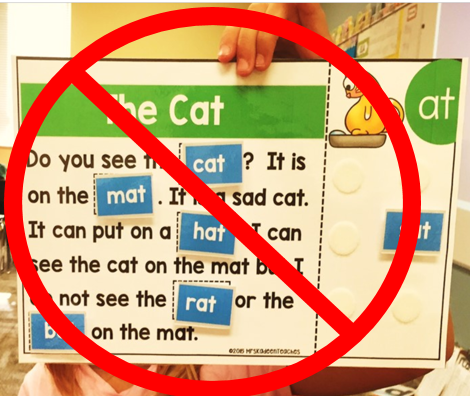
Busy Work That Doesn't Teach Anything
Some activities look good, but the question to be asked is, “What is the child actually getting out of this?” If a child is not thinking, they are not learning.
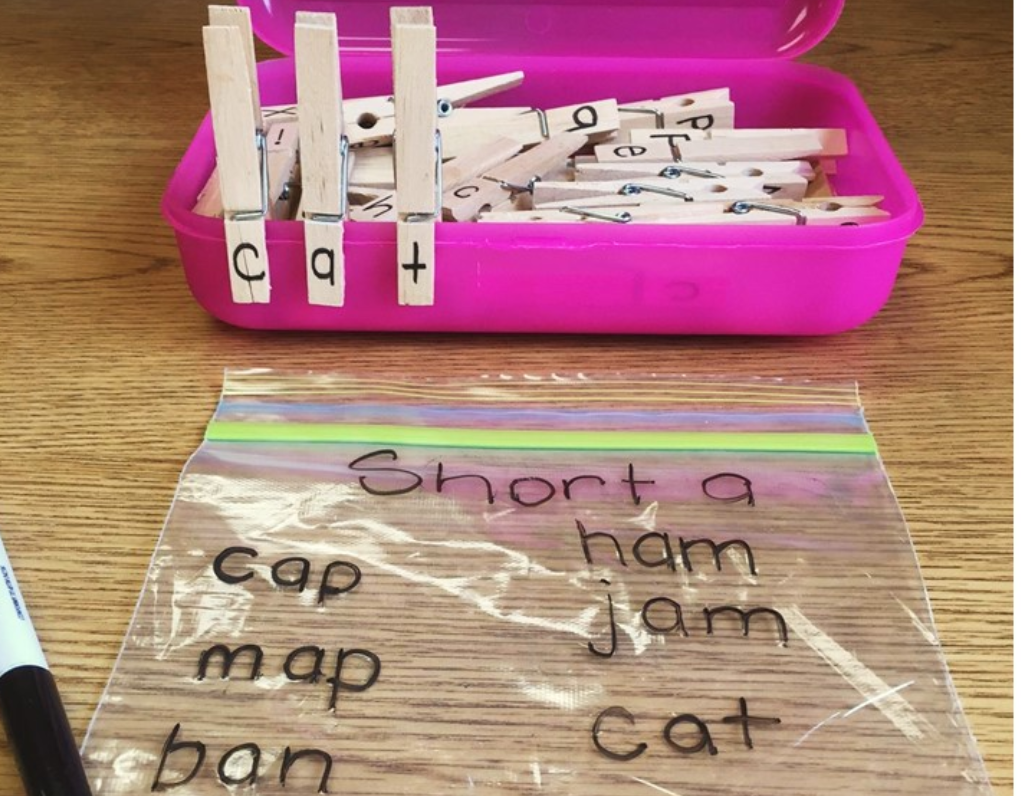
I predict that any young child asked to do this independently would not actually read the word, sound it out and recreate it (without copying) using the pegs. At best, this activity is a copying and matching exercise. More likely, Little Jimmy and Joanie end up with the pegs on the end of their fingers, acting like peg monsters.
As far as peg activities goes, the following two pins are much better. One requires the child to decode the word and select the appropriate picture. The other, to think about the spelling choices in the word. A word of caution. Activities such as these should only ever be given when you can be confident that the child is proficient in these skills, particularly if they are intended to be an independent task. Before assigning activities such as these reflect on how the child will know if they have made an error? Who will provide support and feedback if they need it?
Below are two examples of CVC puzzles. The one on the right provides a picture for the child to match up. What are the chances that the child is actually going to read the sounds and blend them? I’m guessing none. And, no, incidental exposure to these words will not support the child’s reading. Instruction needs to be explicit and teacher lead. This puzzle on the left is a much better option. Keep in mind the same reflection question about who will provide correction and support, these puzzles actually require the child to use their reading skills to solve them.
Here is another example of a ‘don’t think, just copy’ activity. We have visions of children standing blissfully at the white board ‘learning their words’. This falls into the category of a ‘goldfish’ task. That is, you could have a child sit in front of a gold fish bowl for a while and they would come away with the same level of learning. It would be much better to just have the pictures and require the children to segment and create the word using the magnetic letters.
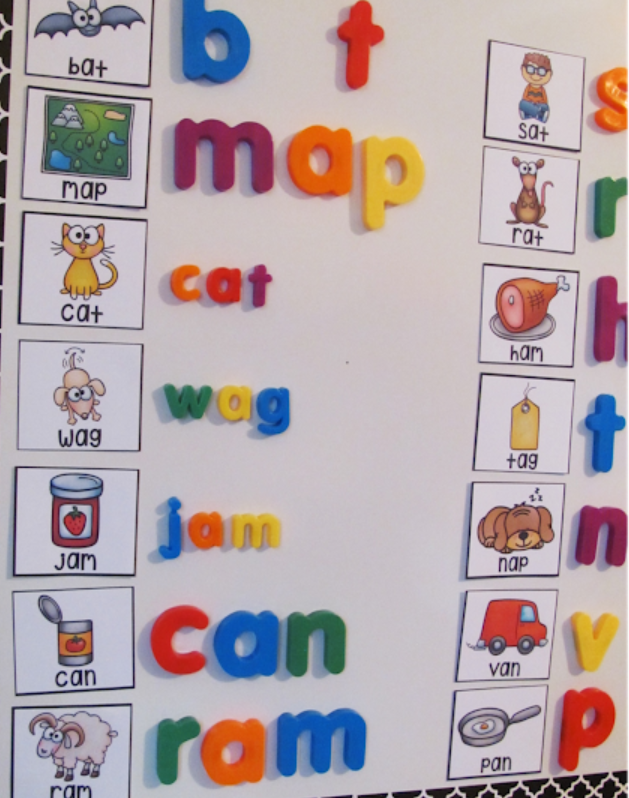
Readers
There are quite a few pins claiming access to ‘phonics readers’. The point of decodable readers is to provide a controlled level of spelling choices that the child needs to decode. The texts below do focus on the sound that is being taught (and word families - tsk, tsk, tsk) , but I have doubts about whether a teacher would be able to say with any certainty that the child knows ALL of the other sounds and high frequency words contained in the passages. This is really important as children tend to resort to guessing (or give up altogether) when they are asked to read using sound and high frequency words they haven't learned yet.
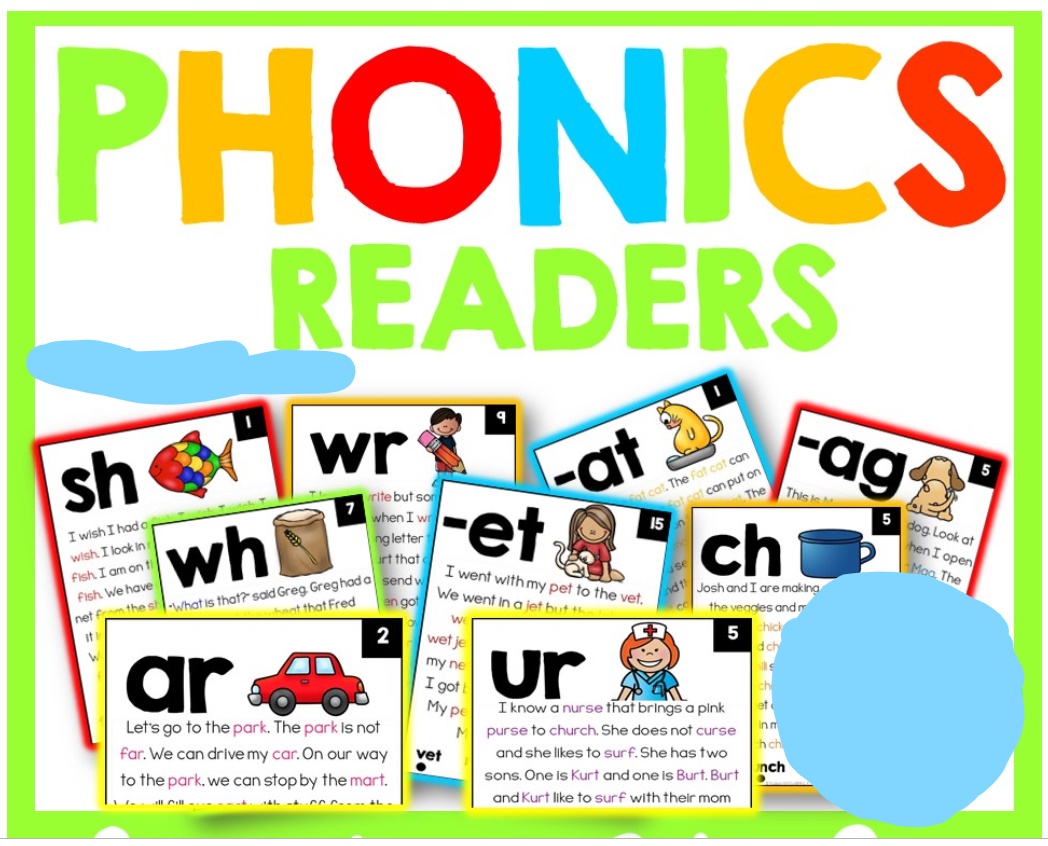
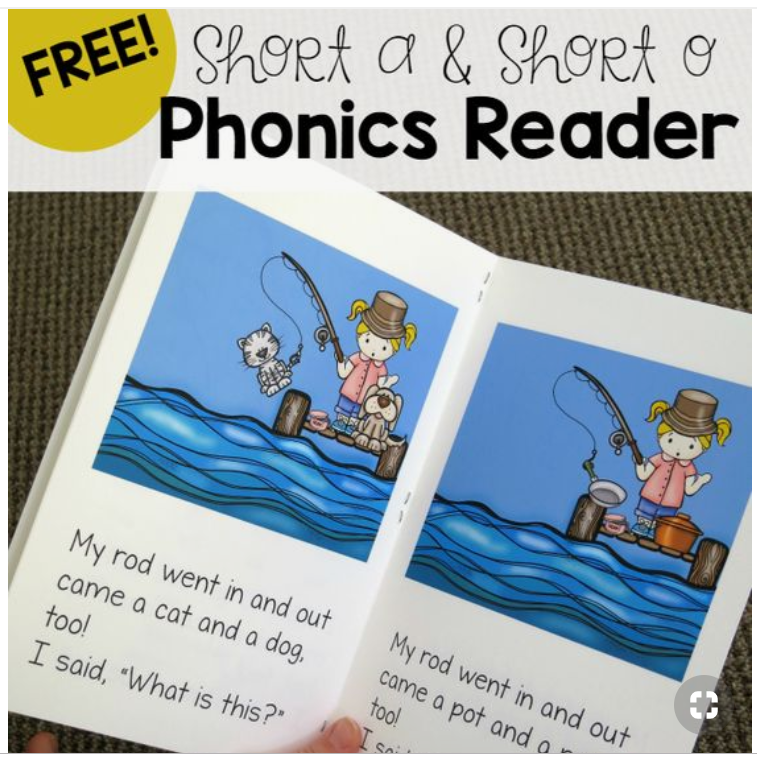
The above book may be ok, but please ensure that readers are cumulative in nature (they add on to what the child already knows). Here is a link to my previous post about how to use decodable readers for different students.
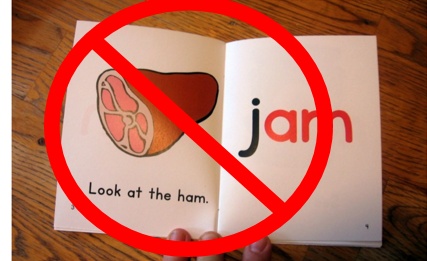
This one may look nice and simple, bit it is really sight words and word family instruction in disguise.
Global shapes and Sight Words
The idea of learning words according to their global shapes or as sight words has been debunked by some serious research. Sight word programs are VERY hard for most schools to let go of. However, they are based on a false theory of how we develop automatic word recognition and really need to go.
Tasks that are way too complicated
This task is an example of something that sounds good to our adult ears, but really is way too complicated for a little person. Presuming that the child could segment the words on their own, there are three separate steps that they need to navigate for each picture as well as keeping track of all of those little bits of paper BEFORE they can solve the word at the end. This activity may be OK for a very small group or one on one activity with an adult, but I would never give this to an average beginning reader and expect them to do it on their own.
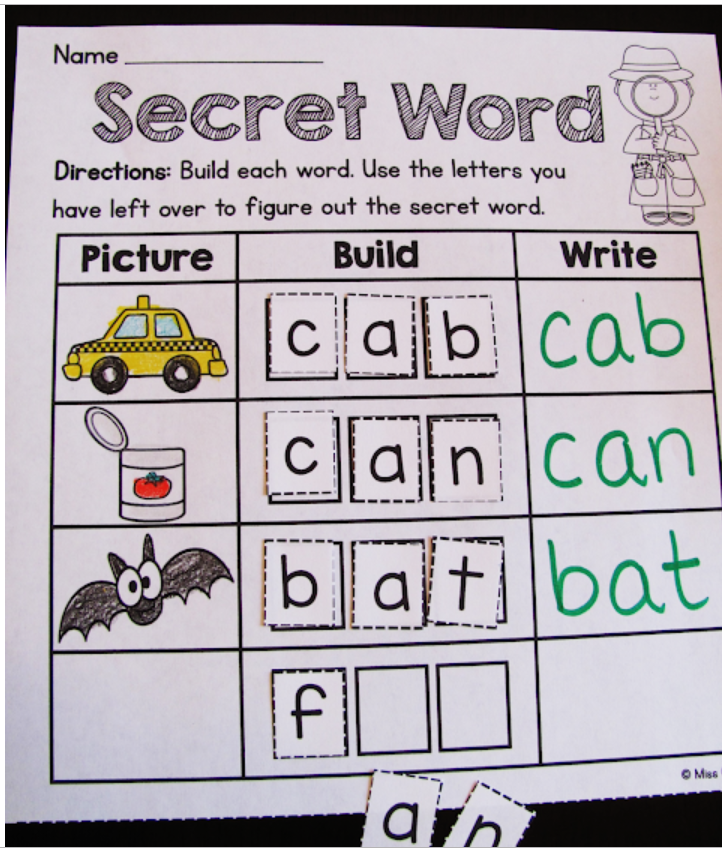
Other useful pins on Pinterest
This free phonological awareness skills checklist. Phonological and phonemic skills are the biggest predictor of reading success or failure and are all too neglected. Great find!
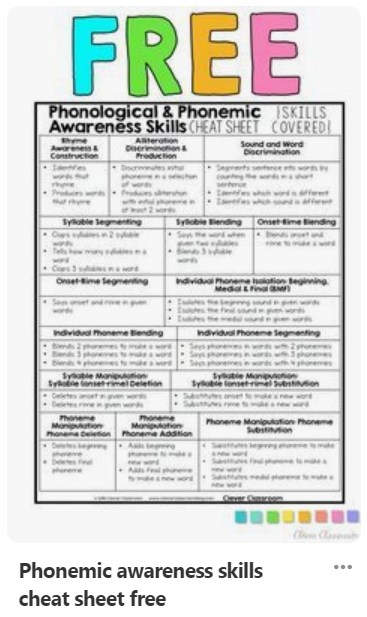
Teaching children about syllable types can really help make spelling transparent. I’d recommend that you engage in some professional learning before teaching this one.
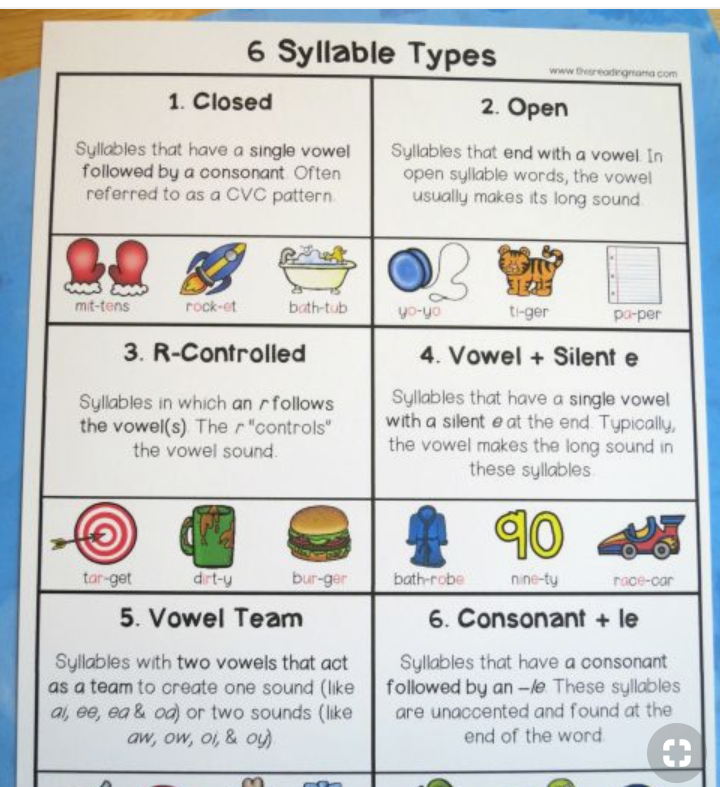
When searching for resources to use in your classroom, go to the page of a reputable practitioner. You still need to critically evaluate resources, but you will know that what you find is much more likely to be valuable.
Regardless of where you get your resources from, be sure that you know why you are using them and exactly what learning will result from the time children spend on them. Resources from Pinterest can be really useful in the classroom, just be sure to provide the right level of support and select carefully! Happy Pinning!
Want to learn more about using activities and 'centres' in your classroom? Watch my clip below

 Jocelyn Seamer Education
Jocelyn Seamer Education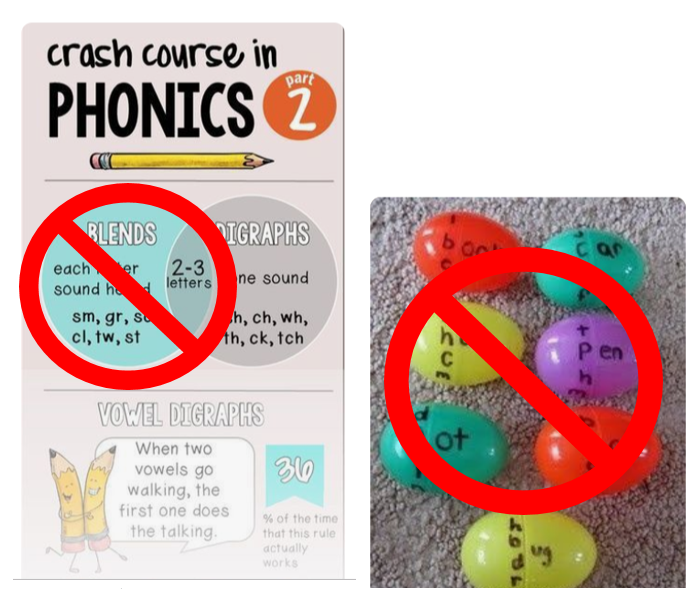
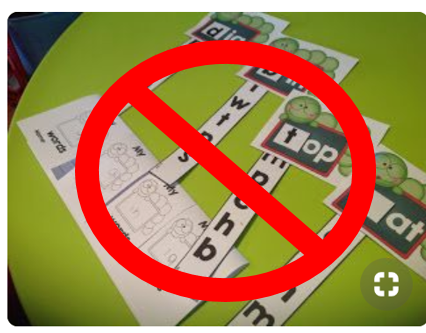
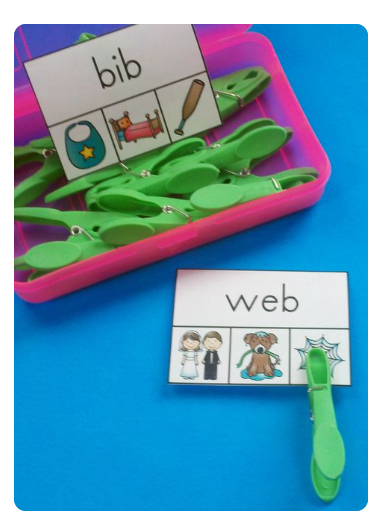

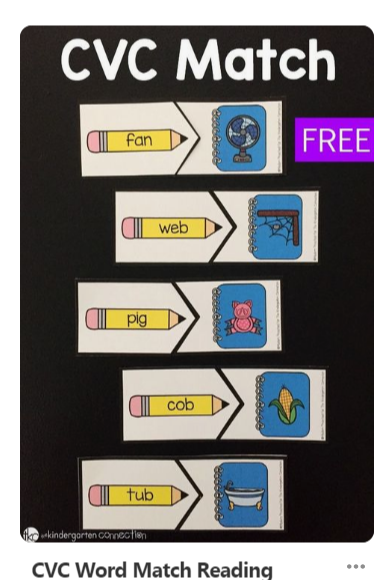
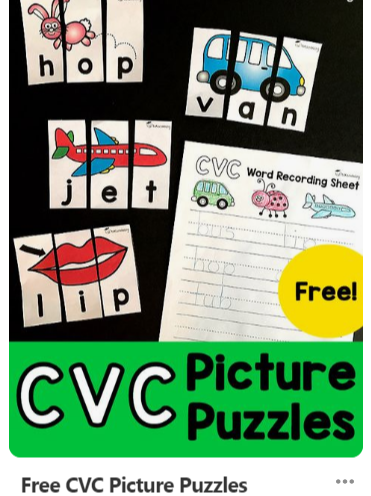
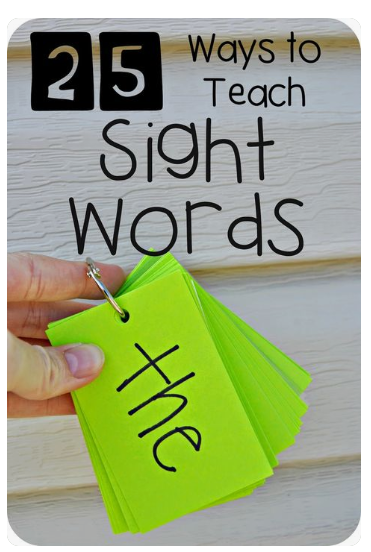
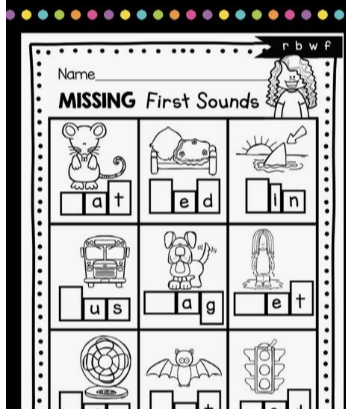
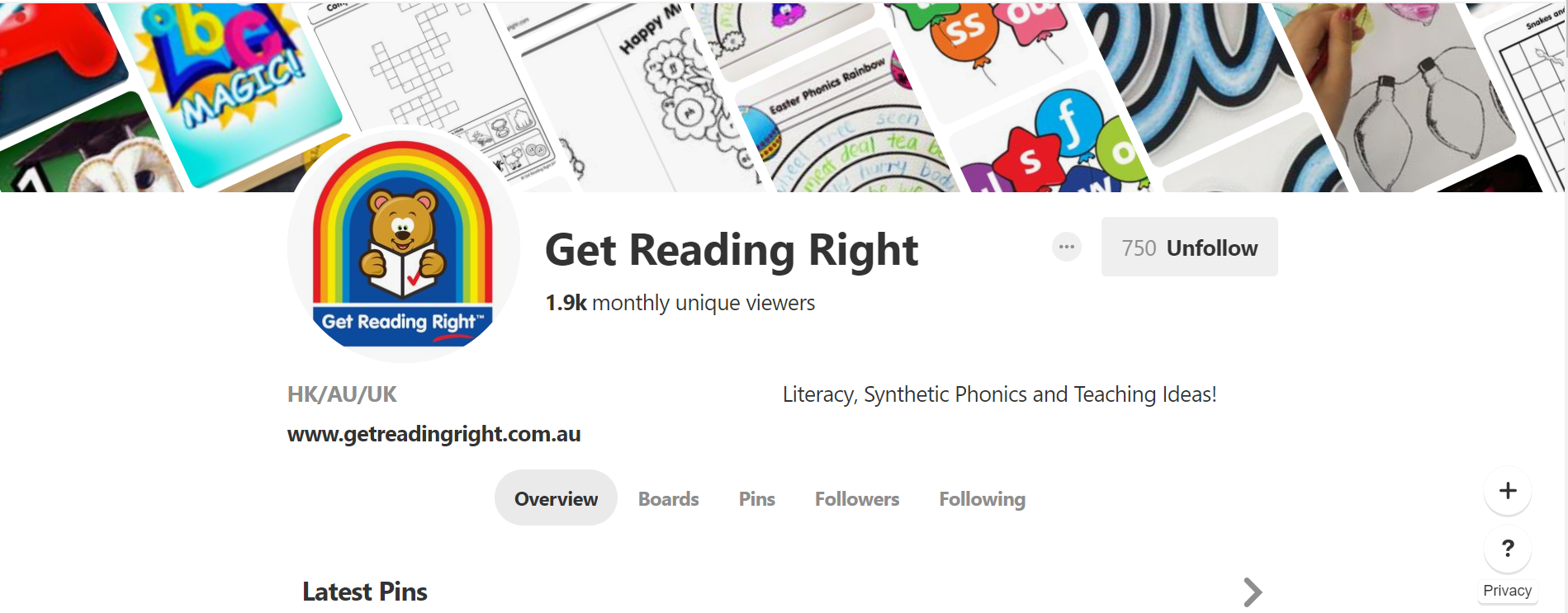
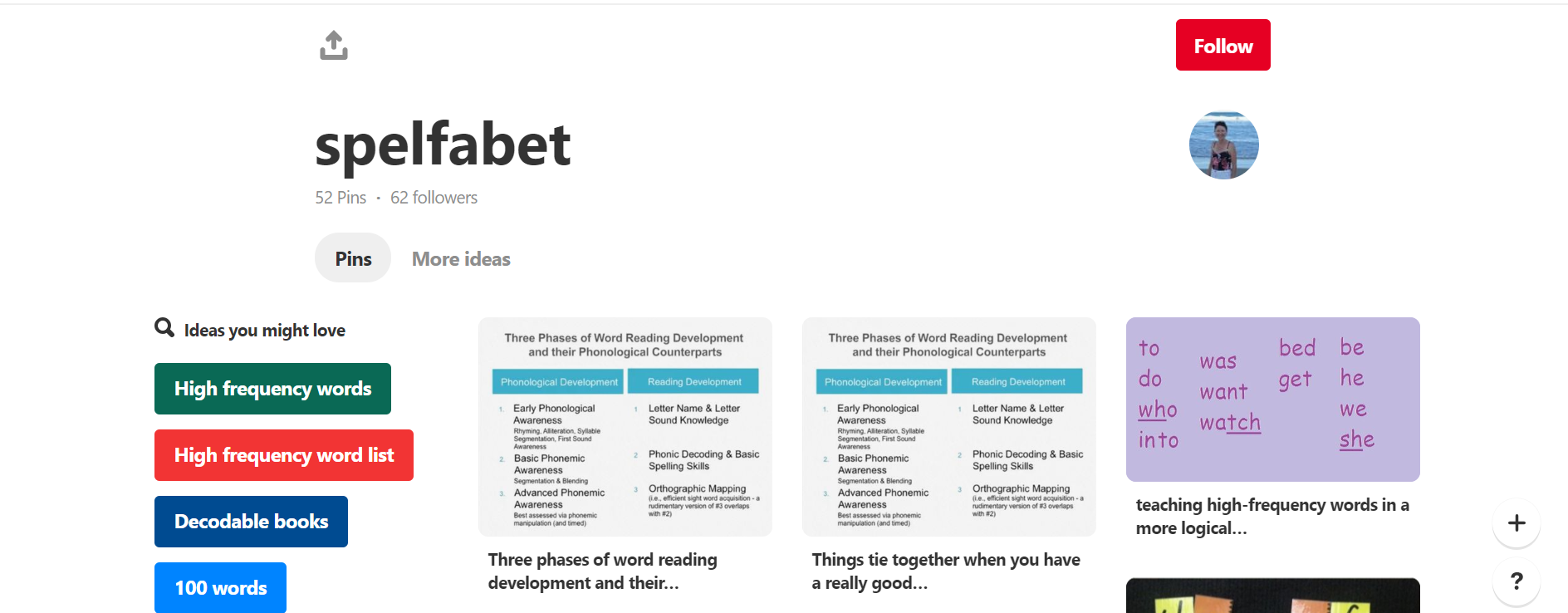
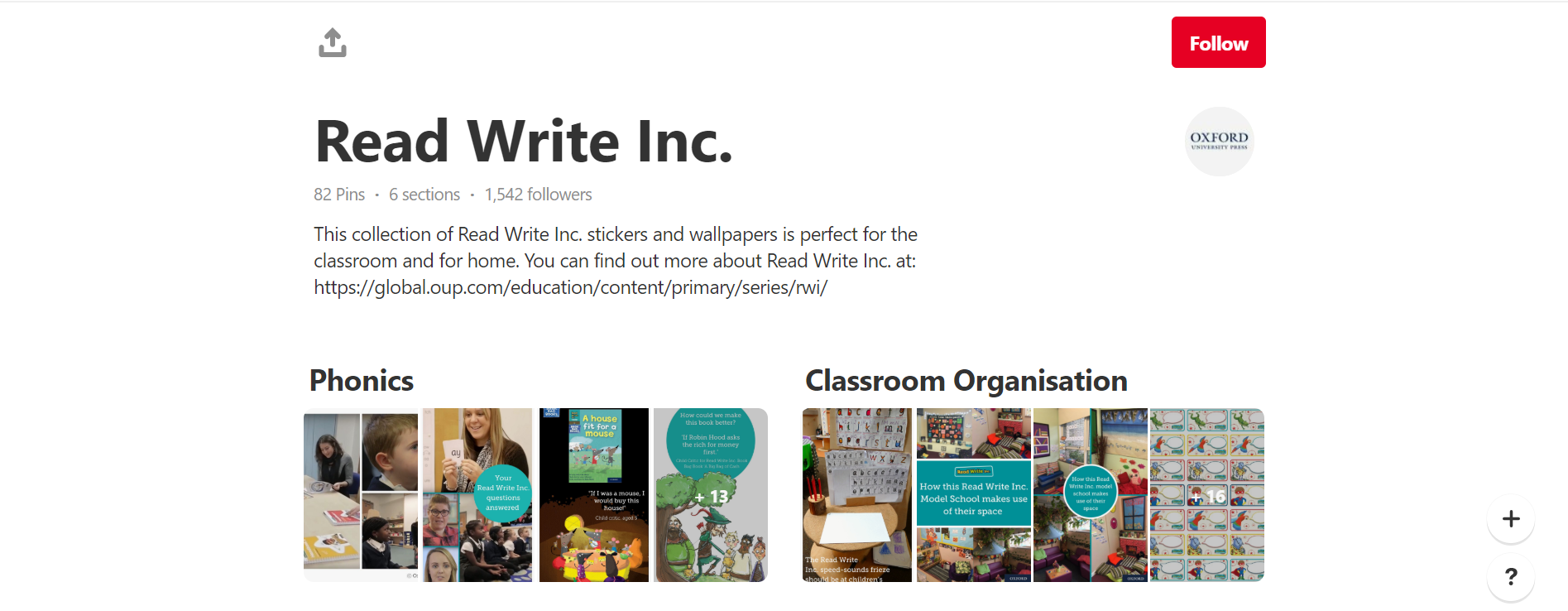

11 comments
I'm confused about the cut up sentence activity. Every week I do a unjumbled sentences task. The sentence is decodable with our focus sound of the week in it. Children unjumble it, copy it and draw a picture to match. I teach Foundation, so it's more of a learning about sentence structure task with a bit of comprehension. Is this OK? Or is this the kind of task you said was 'busy work'?
Can't stop laughing at your term "goldfish activity" just imagining setting up an independent learning station where the group just sits and looks at the goldfish tank for 10 minutes. Too funny!
GREAT title which really encapsulates it all. Many teachers would not understand these distinctions. Alss I cant stop laughing at the peg monsters peg activity. Thankyou Jocelyn!
Leave a comment